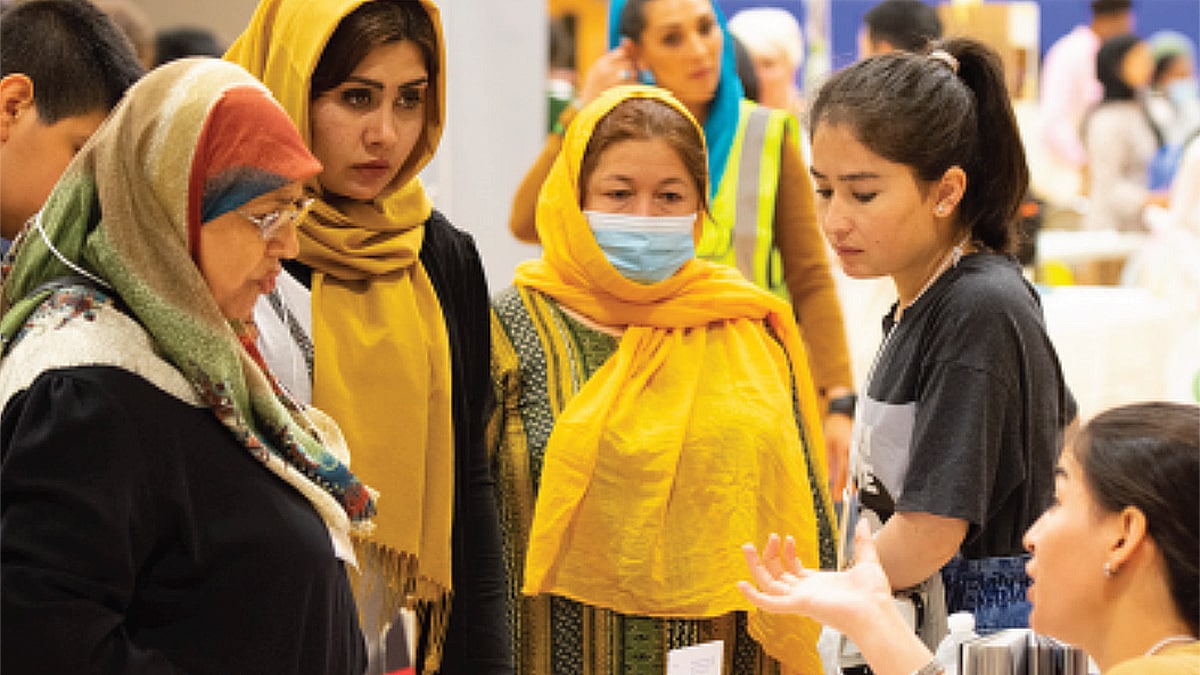Key points
- CDC invests in community-based solutions to reduce health disparities and prevent chronic disease in the United States.
- CDC funds Prevention Research Centers (PRCs) to work closely with their communities to adapt and effectively apply evidence-based interventions at the local level.
- PRCs work to expand the use of evidence-based interventions, increase community access to programs and services, and turn research into real-world policies and programs.
- They've also helped build community capacity and trained the future public health workforce.

How PRCs improve health
Since 1986, Prevention Research Centers (PRCs) have been conducting research based on community-engaged dissemination and implementation (D&I) science to translate interventions to real-world settings.
Across schools of public health and medicine nationwide, PRCs have worked with key partners to:
- Collaborate on all phases of their core research projects.
- Implement, translate, and disseminate PRC research.
- Provide local training and technical assistance.
PRCs have also worked to improve health in their communities by:
- Building community capacity.
- Scaling up evidence-based interventions.
- Increasing access to programs and services.
- Translating research into program and policy.
- Training the future public health workforce.
Dissemination and Implementation (D&I) Science
D&I science examines the factors that prevent or promote using effective interventions.
Learn more about how PRCs are using D&I science.
Building community capacity
PRCs conduct community-engaged research and work with community advisory boards to build community capacity to improve health outcomes. These efforts have helped create sustainable policies, programs, and practices that reach people where they are.
- For example, PRCs continue to work successfully with community health workers (CHWs) to connect communities with health and social services. CHWs are trusted frontline public health workers who often live in the communities they serve.
Scaling up evidence-based interventions
PRCs have used D&I science to identify ways to expand the use of evidence-based interventions, including through their core research projects.
They have explored the factors that can support or hinder the implementation of evidence-based interventions in communities. Broader use of proven interventions makes their benefits available to more people in more settings.
By understanding how to better implement policies, programs, and practices that work across populations and locations, the PRCs have improved health.
- For example, one PRC made its nutrition and physical activity intervention available online to increase access and attendance.
Increasing access to programs and services
PRCs serve populations with higher burdens of chronic disease, including people who are medically underserved and those with lower incomes.
By working in communities that are most affected by chronic disease, PRCs have expanded access to beneficial programs and services.
Creating sustainable change in these communities is key to improving health outcomes among populations at higher risk for developing chronic conditions.
- For example, PRCs have worked with rural, tribal, immigrant, and Deaf communities to address their unique needs in accessing medical care. PRCs continue to research ways to expand effective policies, programs, and practices to improve health outcomes across different populations.
Translating research into policies and programs
PRCs have adapted evidence-based interventions for use in real-world settings to turn research into actual policies and programs that produce positive change in communities.
PRCs identify what works best and tailor solutions to address health issues in the populations and communities they serve.
For example, PRC research has helped:
- Expand tobacco-free policies to reduce secondhand smoke exposure.
- Provide evidence to help state legislators develop a CHW certification program.
- Reduce childhood food insecurity during the COVID-19 pandemic.
PRCs Creating Pathways to Practice
Training the public health workforce
Since 1986, PRCs have increased the skills and capacity of the public health workforce across 64 schools nationwide through their research and center initiatives.
Between 2014–2024, CDC has supported PRCs to train over 105,000 public health professionals and community members.
Training public health practitioners in D&I science prepares them for supporting changes that improve population health.
